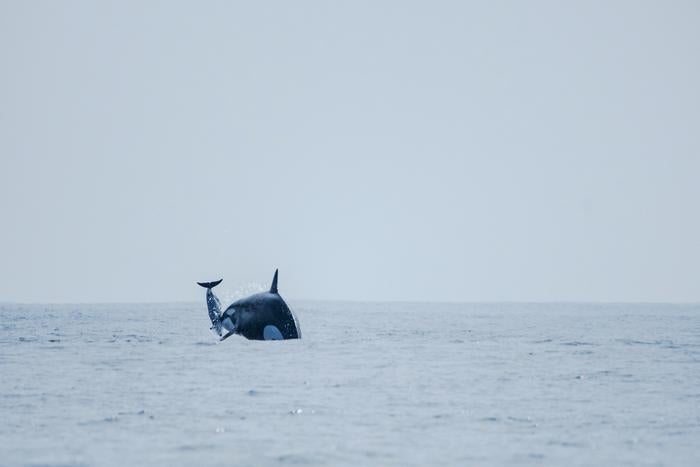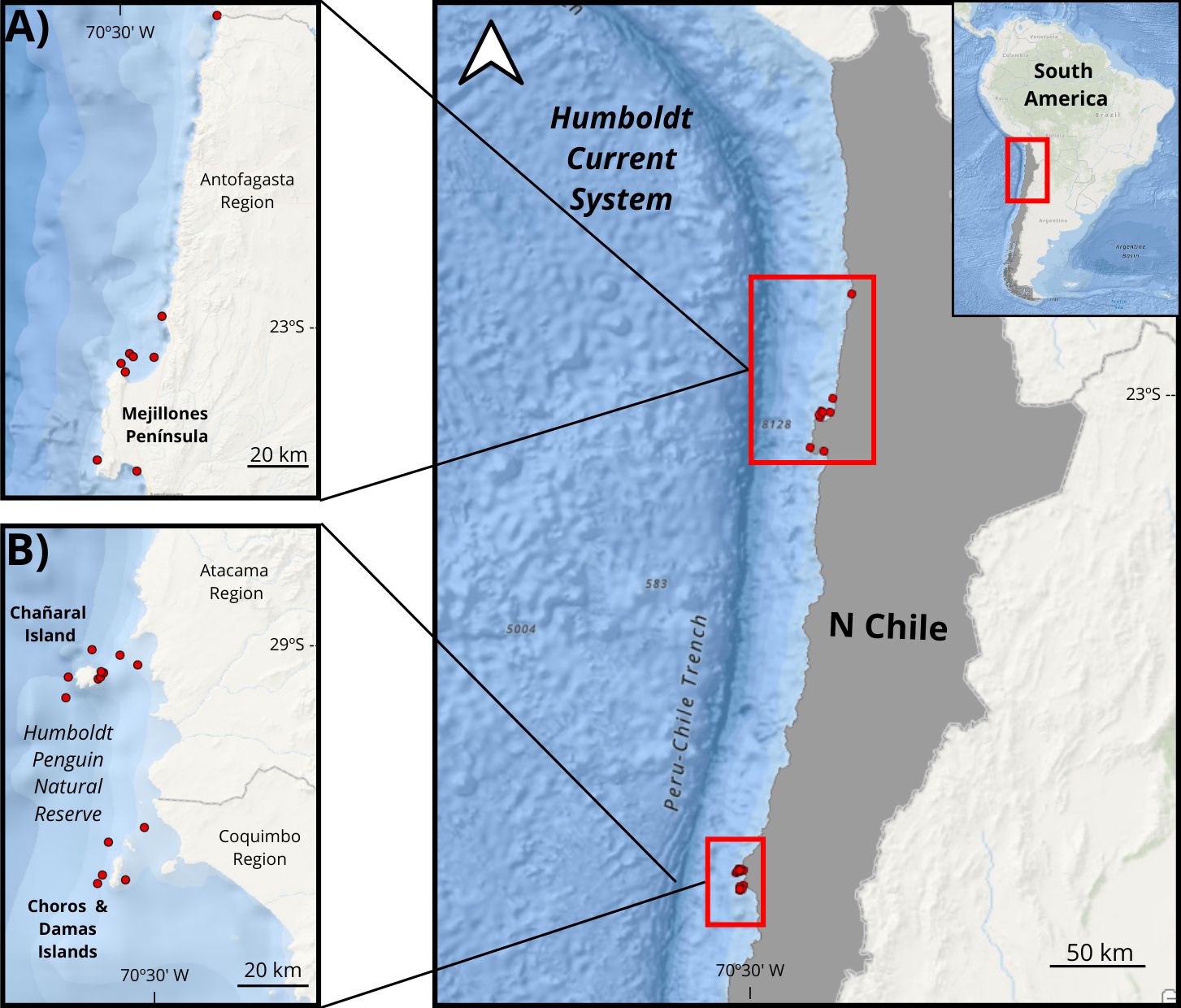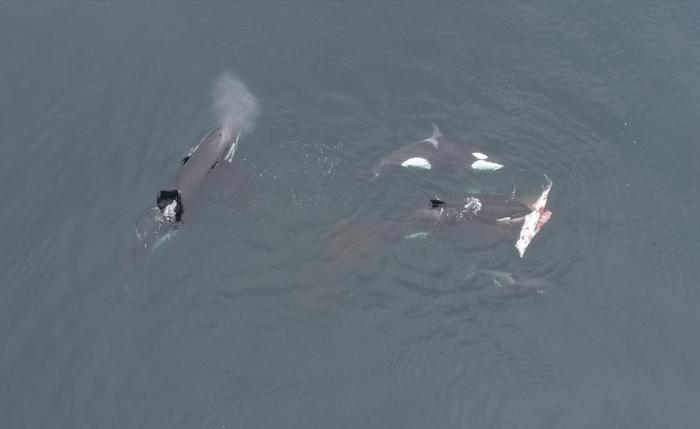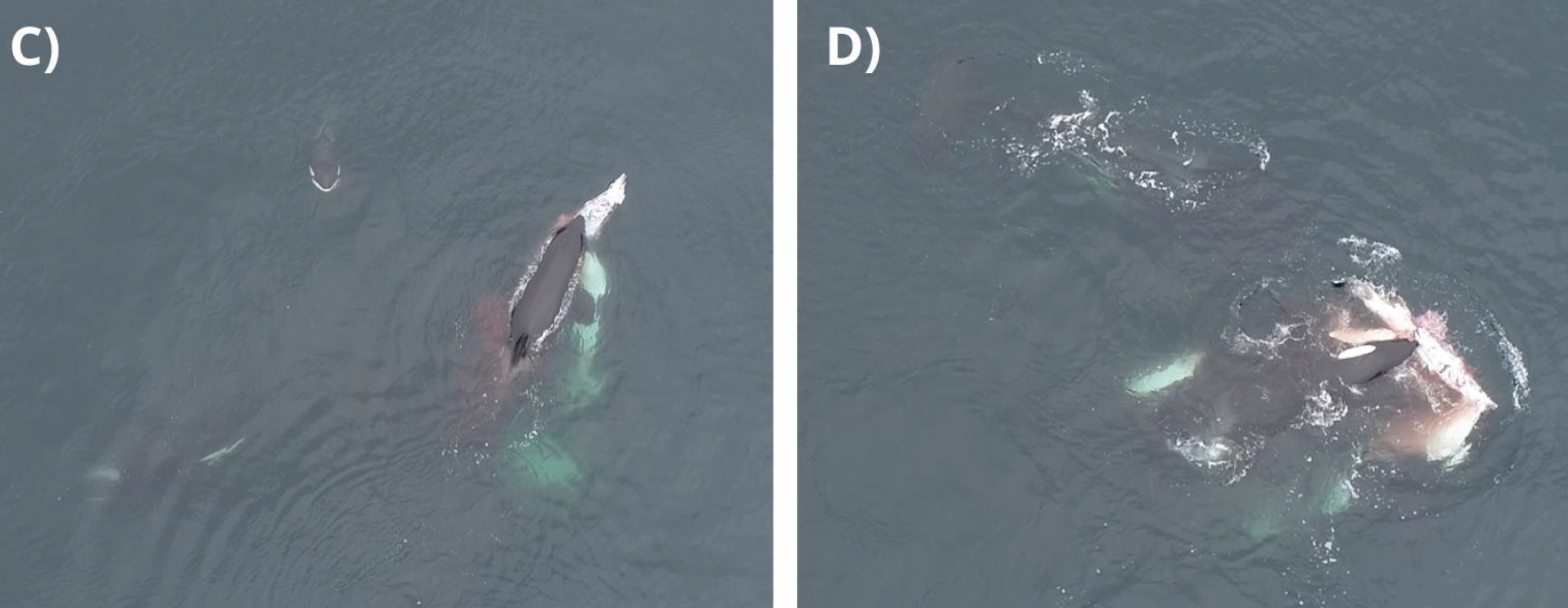Drone footage reveals orcas hunting unexpected prey off Chile for first time
Orcas are intelligent apex predators with an impressively varied diet and unique behaviours
Your support helps us to tell the story
From reproductive rights to climate change to Big Tech, The Independent is on the ground when the story is developing. Whether it's investigating the financials of Elon Musk's pro-Trump PAC or producing our latest documentary, 'The A Word', which shines a light on the American women fighting for reproductive rights, we know how important it is to parse out the facts from the messaging.
At such a critical moment in US history, we need reporters on the ground. Your donation allows us to keep sending journalists to speak to both sides of the story.
The Independent is trusted by Americans across the entire political spectrum. And unlike many other quality news outlets, we choose not to lock Americans out of our reporting and analysis with paywalls. We believe quality journalism should be available to everyone, paid for by those who can afford it.
Your support makes all the difference.A pod of orcas has been spotted for the first time feeding on dolphins off Chile’s coast, shedding light on newly discovered hunting skills of killer whales in the southern hemisphere.
The orcas were previously documented skillfully leveraging local fishing boat movements to capture sea lions. Now, drone footage has shown the killer whales successfully hunting dusky dolphins and sharing the food within the pod.
The discovery, detailed in a study published in the journal Frontiers in Marine Science, sheds new light on the eating habits of orcas and may help better conserve their populations in the southern hemisphere.
The study suggests orcas near Chile’s coast could be increasingly feeding on other marine mammals like dolphins.
Orcas are intelligent apex predators with an impressively varied diet and unique behaviours. Previous studies have shown certain populations of orcas harassing and killing porpoises, but without consuming them.

Recent studies have attempted to explain the strange behaviour of orcas ramming into boats in several parts of the world.
Scientists last year documented a killer whale off the coast of South Africa hunting and eating alive a great white shark, which itself is considered a ferocious apex predator.
Orcas have even been found to hunt and kill blue whales.
Populations of orcas seem to vary in their behaviours, preferred foods, acoustics, and genetics, making it important to understand each pod to tailor conservation efforts specific to them.
For instance, in the southern hemisphere, populations like “Type A” and “Type B1” orcas, focus on marine mammals, while others prefer fish.
In the latest study, researchers assessed a population of killer whales in the Humboldt Current System of the Southeast Pacific coast.

They examined data from their own surveys as well as from amateur scientists tracking orcas during whale-watching and fishing vessel trips.
Researchers also took pictures and videos to help cross-reference the data with catalogues of known individuals.
The new data combined with drone photos and videos helped scientists build a map of orca presence in the area.

In a series of videos, researchers found evidence of the Menacho pod of orcas catching dusky dolphins, a species no population of killer whales in the area has ever successfully hunted.
The footage shows the pod’s matriarch, Dakota, tossing a dusky dolphin into the air.
“Food sharing from this matriarch first to the juvenile male, later the lone adult male, and finally the adult female who also shared with her presumed offspring,” scientists wrote.
Food sharing among orcas is a behaviour previously recorded among many populations of the species.

Female orcas of some groups are often seen sharing meat with members, allowing closer relations to eat first, scientists said.
“The fact that we have observed newborn calves is important because it indicates that they are having offspring, but we don’t know their survival rate,” study co-author García Cegarra said.
“Thanks to citizen science, we can follow the presence of killer whales along thousands of kilometres of the coast of northern Chile, but most orca sightings are opportunistic.”

Join our commenting forum
Join thought-provoking conversations, follow other Independent readers and see their replies
Comments